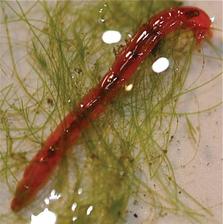 Picture - TPO Magazine
Picture - TPO Magazine Control Options
I have seen numerous ways people have tried to control midge flies from using pesticides to dosing hypochlorite to the system. The above control attempts can actually cause more problems! Research has found two methods for excellent control of a midge larvae infestation - they are also US EPA approved for control of midge in wastewater.
Option 1 - Use Bacillus thruringensis (AquabacXT) - Becker Microbial Products
Bt slurry produced from the spores of a common bacteria works effectively to kill larvae. Dosed at 10-50 ppm over a few day period, the Bt slurry will be consumed by the larvae which damages their gut .... thereby killing the larvae.
Option 2 - Use Strike an insect growth regulator - Adapco
While not as "natural" as the Bt, strike only impacts the growth/reproductive cycle of the midge larvae. Strike is added near the influent at a rate of 5 ounces per million gallons flow. By adding this dose for 10 - 14 days the midge larvae will be brought under control.
What if I have lost substantial amounts of my biomass and see increased effluent ammonia?
The first step in stopping biomass loss from midge larvae is to use one of the control options to eliminate the infestation. After commencing the control option, I would wait 24 hours. You can wait for biomass to naturally regrow, or to speed up the process seed the system commercial bacterial bioaugmentation product. We have been able to restore normal biological activity and increase MLSS to needed levels within 3 - 4 days.

 RSS Feed
RSS Feed